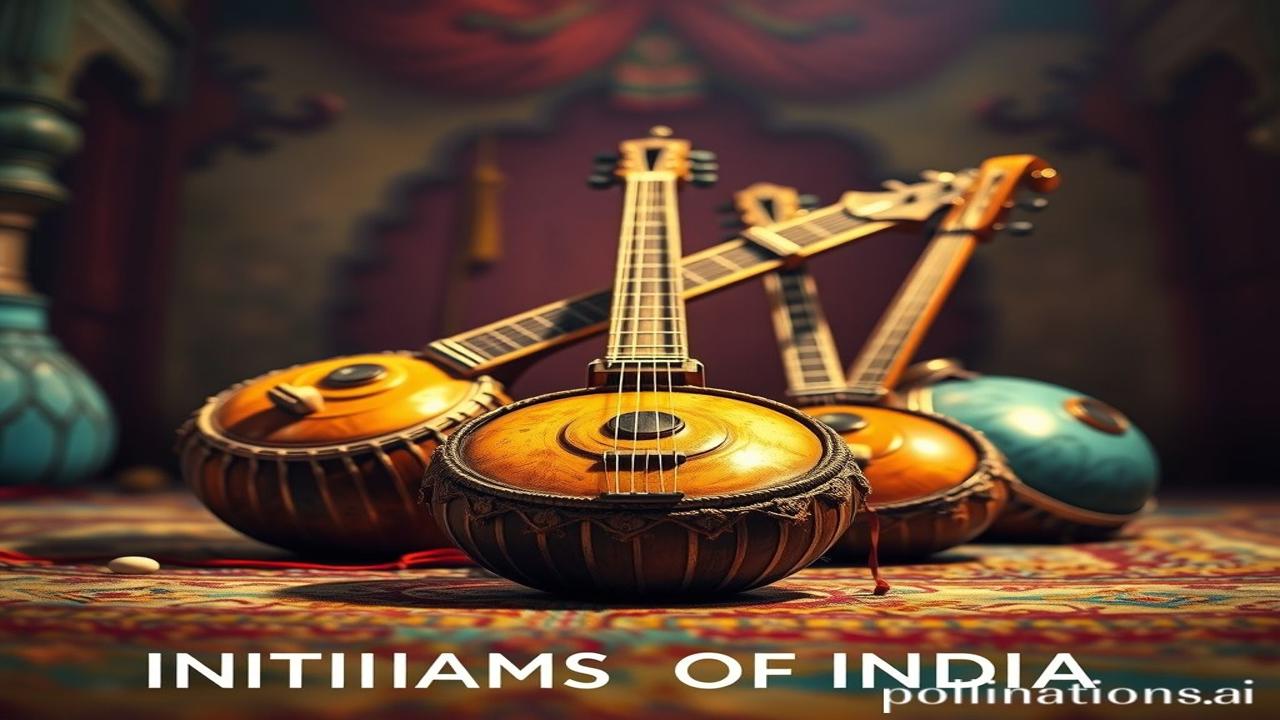Khoi Hui Dhun: Unearthing the Forgotten Musical Instruments of India
Kabhi socha hai, jab raat gehri hoti hai aur tare chamakte hain, tab kya koi khoi hui dhun hawa mein goonjti hai? Aisi dhun jo kisi bhooli hui saaz se nikli ho, kisi raaja ke darbaar mein ya kisi sant ke aashram mein? Waqt ki dhool mein, India ke kuch musical instruments dabi reh gaye hain, unki kahaniyan sunane wala koi nahi. Chalo, aaj hum unhi saazon ki khoj mein nikalte hain!
The Lost Symphony: A Journey Through Time
What are these forgotten instruments? Think of them as echoes of India’s rich musical heritage. They represent not just sounds, but entire cultures, traditions, and stories. From the ancient kingdoms to the Mughal courts, music played a vital role in Indian society.
When and where did these instruments originate? Some, like the Ravanahatha, trace their roots back to the Ramayana era, around 5000 years ago! Others, like the Pena, flourished in the Manipur region, evolving over centuries. The Nagfani from Rajasthan, with its snake-like appearance, is a visual testament to the region’s cultural richness.
Why are they important? These instruments aren’t just relics. They are dharohar (heritage), kala (art), and a vital part of Bharatiyata (Indianness). They remind us of the sheer diversity and creativity of our ancestors. They are the keys to unlocking forgotten melodies and understanding a deeper part of our identity. Imagine the Ravanahatha being played by King Ravana himself – legend has it he was a skilled musician! Or the Pena accompanying the graceful movements of Manipuri dancers, its sounds weaving tales of love and bravery.
Zameeni Sach: People and Life
Picture this: Ma Rukmini, a village artisan, painstakingly carving intricate designs on a Kinnari Veena. Her fingers, rough from years of working with wood, moved with a grace born of generations of tradition. She’s preparing the instrument for the annual village festival. Her daughter, Radha, hums a tune, anticipating the joyous music that will fill the air.
Now, imagine a Rajasthani warrior, riding through the desert on his camel. He carries a Nagfani, not just as an instrument, but as a symbol of his courage and connection to the land. As the sun sets, painting the sky in hues of orange and purple, he plays a mournful tune, remembering fallen comrades.
These aren’t just instruments; they’re companions, storytellers, and a reflection of the lives of the people who played them. They were tools for celebration, for mourning, for connecting with the divine.
Dharohar aur Pehchan: Cultural Significance Today
Do these instruments still echo in modern India? While many are forgotten, their influence lingers. You might hear echoes of the Ravanahatha in the stringed instruments used in folk music. The rhythms of the Pena still resonate in Manipuri classical dance. Even if the instruments themselves are rare, their spirit lives on.
These forgotten instruments remind us that our cultural identity isn’t static. It’s a constantly evolving tapestry woven from threads of the past, present, and future. By remembering and reviving these forgotten instruments, we reconnect with our roots and enrich our understanding of what it means to be Indian.
Mazedar Tathya ya Bhram-Bhanjak: Fun Fact!
Log samajhte hain ki classical music humesha se rich logon ka shok raha hai, lekin asli sach yeh hai… many of these instruments were deeply ingrained in the lives of ordinary people. They were played in fields, in homes, in temples – music was a part of everyday life, not just reserved for the elite.
Drishya aur Bhavnayein: Visual & Sensory Layer
Imagine the air thick with the scent of sandalwood incense as a Kinnari Veena is played in a dimly lit temple. The temple walls, cool to the touch, are adorned with intricate carvings of deities. The sound of the veena resonates through the space, creating a feeling of peace and serenity. Or picture the sounds of the Nagfani echoing through the vast Rajasthani desert, carried on the wind alongside the scent of sand and the distant cries of desert birds.
Antim Vichar ya Uddharan: Closing Insight
As we remember these forgotten instruments, let us also remember the spirit of creativity and innovation that gave birth to them. Let us strive to preserve our cultural heritage, not as relics of the past, but as living traditions that can enrich our present and inspire our future.
“Sa vidya ya vimuktaye” – That is knowledge which liberates. And perhaps, that is also the power of music – to liberate us from the confines of time and connect us to the shared human experience.
